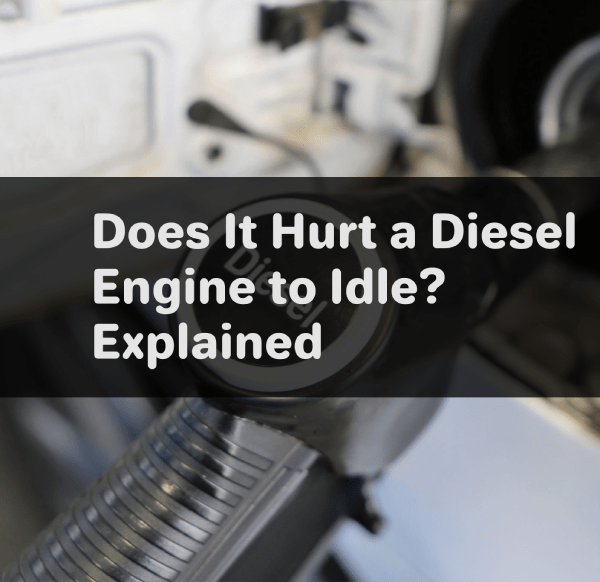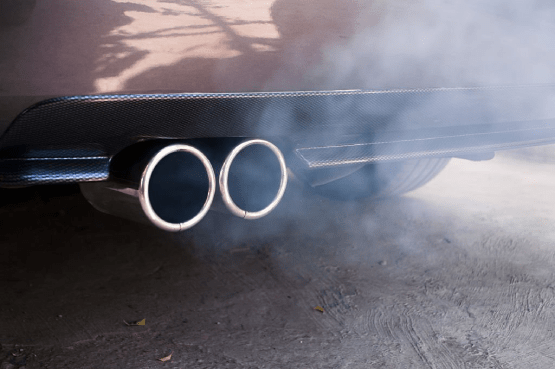There are a lot of misconceptions when it comes to what idling entails. Some define idling as running a car while not in it or running a car for about 5 minutes in the morning to defrost its windshields. But the question is -what does idling mean exactly?
Idling is leaving a vehicle’s engine running while the car is not accelerating-that is when your foot’s off the gas. Idling a machine has always been considered the norm and has become a habit hard to break. Most drivers idle when caught in traffic or parked outside a building. But are they making the right decision? Let’s find out!
Does idling hurt your diesel engine?
Fuel is probably the highest running cost a car owner pays during the vehicle’s ownership. Most now embrace the idea of idling a diesel engine as it is a common belief that a diesel engine idling conserves fuel, but is this true?
While there are no quick signs indicating that idling will hurt your diesel engine, there are certainly drawbacks to idling your engine for too long. Idling a diesel engine for prolonged periods of time will only result in a waste of fuel and increased maintenance costs.

Here are some more misconceptions in regard to a diesel engine idling:
Misconception 1
Diesel engines must warm up for about 5 to 10 minutes before operating. Many believe diesel engines must idle before accelerating their cars, especially on cold mornings.
Fact 1
Idling diesel engines has now become a serious issue that needs to be addressed because many diesel engines idle unnecessarily. Diesel engine manufacturers urge drivers to allow the engines idle for just 2 to 3 minutes or just 30 seconds.
What about in cold winter mornings? Starting a cold diesel engine and accelerating right away can cause damage to the engine and some of its components; cylinders, spark plugs, and exhaust systems; instead, one needs to let the cylinder and oil temperature climb a little bit.
Misconception 2
Idling a diesel engine is good.
Fact 2
Warming up a diesel engine results in more damage to the engine when compared to starting and stopping. Driving at highway velocity is known to cause wear on internal components but running an engine at idle results in up to two times the wear.
It causes the engine to slobber, leading to a buildup of carbon, resulting in mirror gazing in the cylinder walls. Mirror glazing occurs when there is an enamel-like glaze on the cylinder walls around the piston. (Glazing is irreparable)
Misconception 3
Idling helps save money. Most drivers idle their engines, especially when caught in traffic, to conserve fuel, indirectly saving cash.
Fact 3
A considerable amount of money is wasted as idling an engine consumes a lot of fuel-diesel that isn’t used to run the engine. Depending on engine size, research has shown that idling an engine consumes 0.6 liters/hr while idling a 3.5-liter engine uses more than 2 liters of gas per hour.
Shocking right?
Can you leave a diesel running all night?
On an afternoon, nine parked trucks were spotted at a truck stop. These trucks had nothing in common, but one thing-their diesel engines were all running. But why? To satisfy our curiosity, most drivers leave their engines running for an extended period for some reasons-weather conditions, economic pressures, and old habits.
Leaving a diesel engine to run for a long period can result in damaging the engine. While idling, a lot of diesel motors do not create sufficient heat to fully expand the metals that seal the mating surface and fully burn the fuel resulting in ‘wet stacking.’ Wet stacking is the process where the unburnt fuel passes on into the exhaust system, possibly diluting the crankcase.
Unnecessary idling overnight causes the diesel engine to produce much higher emissions than it would while using the same amount of fuel under load. It also results in air pollution as it causes soot to build up in the engine resulting in the emission of black smoke when the engine revs.
Is a long idle killing your diesel engine?
Idling an engine, as we all know, is both inevitable and, to a certain extent, important. But as the “excess of everything is bad ” has always proved to be accurate, this case is no different.
Prolonged idling can actually damage your diesel engine. The reason for this is that when your engine is idling, it isn’t operating at its peak efficiency. This can lead to increased wear and tear on the engine, and eventually to problems such as reduced power and performance.
A diesel engine is idled to ensure easy flow of oil around the engine. In the cold winter mornings, the oil looks like a gel and doesn’t flow around the engine as intended.
Here are three main consequences of long idling periods:
- It can result in diesel dilution in the engine, causing a drop in lube oil viscosity and premature overhaul of the engine.
- Diesel dilution – diesel mixing with lube oil can also result in wear of the lube oil components.
- It will cause the turbocharger to wear faster as the oil pressure drops with the engine still running at very high RPMs.
Is it good to idle a diesel engine?
As stated above, idling your diesel engine can definitely help in some scenarios, but it’s also dependent on the type of car. Idling modern diesel engines with DPFs and EGR valves can make them run in a manner the manufacturer didn’t recommend-the routine can cause the intake manifolds to soot up more than normal. But a question remains- does all idle kill the diesel engine?

Idling older diesel engines have little or no effect on the engines as they don’t possess the pollution controls the modern engines have. The only effect it seems to have on the engine is that it consumes a lot of fuel. Until now, we’ve neglected the effects of idling diesel engines on the atmosphere and our health.
An idling diesel engine emits harmful gasses and chemicals into the air that aid the production of ground-level ozone, which destroys crops, trees, and vegetation. It also brings about acid rain, which removes minerals and nutrients from the soil. What about its effects on our health? The exhaust produced by diesel engines is detrimental to our health as it worsens asthma and some allergies, which can result in death.
How long is too long to idle diesel?
Some stay away from idling their diesel engines to ensure their engines’ longevity and prevent them from developing technical complications. Regardless some are willing to risk idling their diesel engines but are only conscious of the time used to idle. But a question still lingers, how long is too long to idle?
Diesel engines require a few minutes to warm up, 2 to 3 minutes, or as advised by most diesel engine manufacturers- a maximum of 30 seconds, and this is because needless idling of engines can shorten the life span of a diesel engine, waste fuel, and also contaminate the air.
Although a few still doubt that this is enough time to warm up their diesel engines, they can rest assured as experts also advise the same. All they can do after these few minutes is start driving the cars or trucks at a steady pace, for this will warm up the engine and get the oil circulating.
Do diesel need to idle?
Diesel engines are now common in cars, unlike before, as they were more dominant in trucks. This has resulted in people’s curiosity as they all want to maintain their engines. Diesel idling is very important, especially on winter mornings when it’s below 20 degrees Fahrenheit outside.
Typically, the oil pressure sensors in the main oil galley so the cam lobes, cam bearings, and rocker’s arms might not be lubricated. Oil will warm up not to full operating temperature but somewhat quickly due to the friction application aspect of it being pumped through the galley, crankshaft, and all of the different orifices in the engine.
It’s also getting sprayed through the cooling jet onto the cylinder and the piston pack, as that will warm it up a little.
Theoretically, it’s 10 degrees outside; if a driver starts the engine, the coolant temperature will not climb immediately as diesel engines don’t put excess heat into the cooling system, especially at idle.
So the best action in this scenario is to wait 30 seconds to a minute and let the oil pressure and oil feed all the moving components. At this point, if it’s freezing outside, the driver can rev the engine up to about a thousand RPMs as this increases the cylinder pressure, combustion temperature, and exhaust temperature, which will help increase the oil temperature and coolant temperature faster.
At this temperature, the driver doesn’t need to idle it for very long- a minute or less. Finally, at this point, the driver can accelerate but at a steady pace.
Bottom line
Idling diesel engines is a habit hard to break for some and a violation for others. Idling a diesel engine helps ensure the engine’s components are well-lubricated, but unnecessary idling can cause great harm to the engine and its components. So drivers need to avoid needlessly idling their diesel engines but idle them for a maximum of 3 minutes.
Sources
Contradicting Diesel Idling Myths and Facts
Every since I was a little boy, I can remember spending the afternoons in my dad’s repair shop. I got my first car at 16 and it was the best feeling ever!
I have contributed to various automotive publications but decided it’s finally time to settle for something constant.








